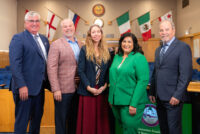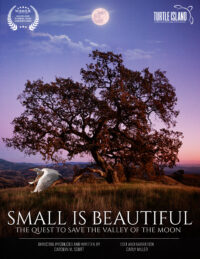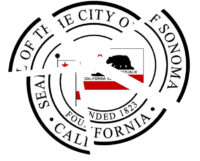Fundamental philosophies, not project specifics, split the Sonoma City Council at its meeting Wednesday night over a proposed 40-unit affordable housing project on Sonoma Highway.
Councilmembers Laurie Gallian, Ken Brown and Steve Barbose said the city should provide affordable housing for the teachers, firemen, healthcare workers and workers in the hospitality industry.
Councilmembers August Sebastiani and Joanne Sanders voted against moving forward with an affordable housing project at the site. Sebastiani said he is against subsidized housing – period. Councilmember Joanne Sanders said the city should get out of the risky business of real estate development.
They weren’t the only dissenting parties.
A group of over a dozen people who live in the area of the development located at 19344 Sonoma Highway voiced opposition. Their top concerns were water drainage, density, and traffic. Many were still bitter about a nearby warehouse that went up at the back of the Old Sonoma Bowl property without their support.
Some neighbors suggested that low-income housing would attract “bad elements” – whether renters who wouldn’t keep up the properties well or crime activity. Gallian said that at one point in her life, as a single mother working as an independent consultant, she would have qualified for similar affordable housing. “To say that you would not have an individual of this quality in this housing unit,” said Gallian, “would be that you would not have me, sitting here, on this City Council.”
“The bottom line to me,” said Sebastiani, “is my long-standing opposition to subsidized housing. I do not believe that is the long-term answer for Sonoma. I do not believe in community-ism.”
Sanders held up a copy of Tuesday’s Sonoma Valley Sun and pointed out that 50 vacant rental units are currently listed. “I don’t understand why we want to add to the problem by putting more houses on the market at a time when we really need more jobs,” she said. “Who’s going to rent all these?” She said investing in real estate is a risky proposition and the city shouldn’t be doing it.
Her comments drew applause from the audience.
Rick Deringer, developer of the townhouses and single-family homes to the south of the property, demanded that the council do an Environmental Impact Report (EIR) before moving forward.
Councilmember Barbose pointed out that it is impossible to do an EIR without a concrete project proposal. He also took issue with the audience shouting out comments and becoming hostile. “It’s easy to throw rocks,” he said, “but it’s harder to build a community. That’s what I’m asking people to do here. It has to be a project that everybody can live with. The city needs this housing.”
The proposed project
The city purchased a 2.07-acre lot located at 19344 Sonoma Highway in 2008 with redevelopment funds dedicated to developing affordable housing.
The city recently solicited proposals for a family housing development integrating green elements. Staff required that the housing be accessible to low-income and very low-income residents. The city staff received six proposals, narrowed those to three, following up with interviews.
Staff ulimately recommended Affordable Housing Associates (AHA), citing their thorough integration of green building principles and their conceptual site plan compatible with neighboring houses. AHA has developed over 900 rental homes throughout the Bay Area, including a similar project currently under construction in Sebastopol.
David Goodison, the city’s planning director, said the group didn’t have the lowest bid, but their bid was highly competitive.
The proposed project consists of forty apartments, primarily two-bedroom with some one- and three-bedroom units. Three-quarters will be affordable to very low-income families that earn 50 percent or less of the Area Median Income (AMI). That includes six units affordable to extremely low-income families that earn less than 30 percent of AMI.
The total project cost is estimated at $14 million. In order to make it feasible, the city will have to donate the site (value $7.2 million) and provide $1.2 million in “gap financing” that will be drawn from the city’s low-moderate housing income fund. The developer has also applied for $200,000 in Community Development Agency grant funding.
The renters must meet income eligibility, have a social security number, and their rental and credit histories are investigated. They are then placed through a lottery.
The green elements of the plan include: maximizing southern exposure, solar panels providing electricity to common areas, landscaping that doesn’t require very much water, and air circulation that doesn’t aggravate asthma or compromise health.
The development process includes community input through an advisory committee that meets for three design-planning workshops.




